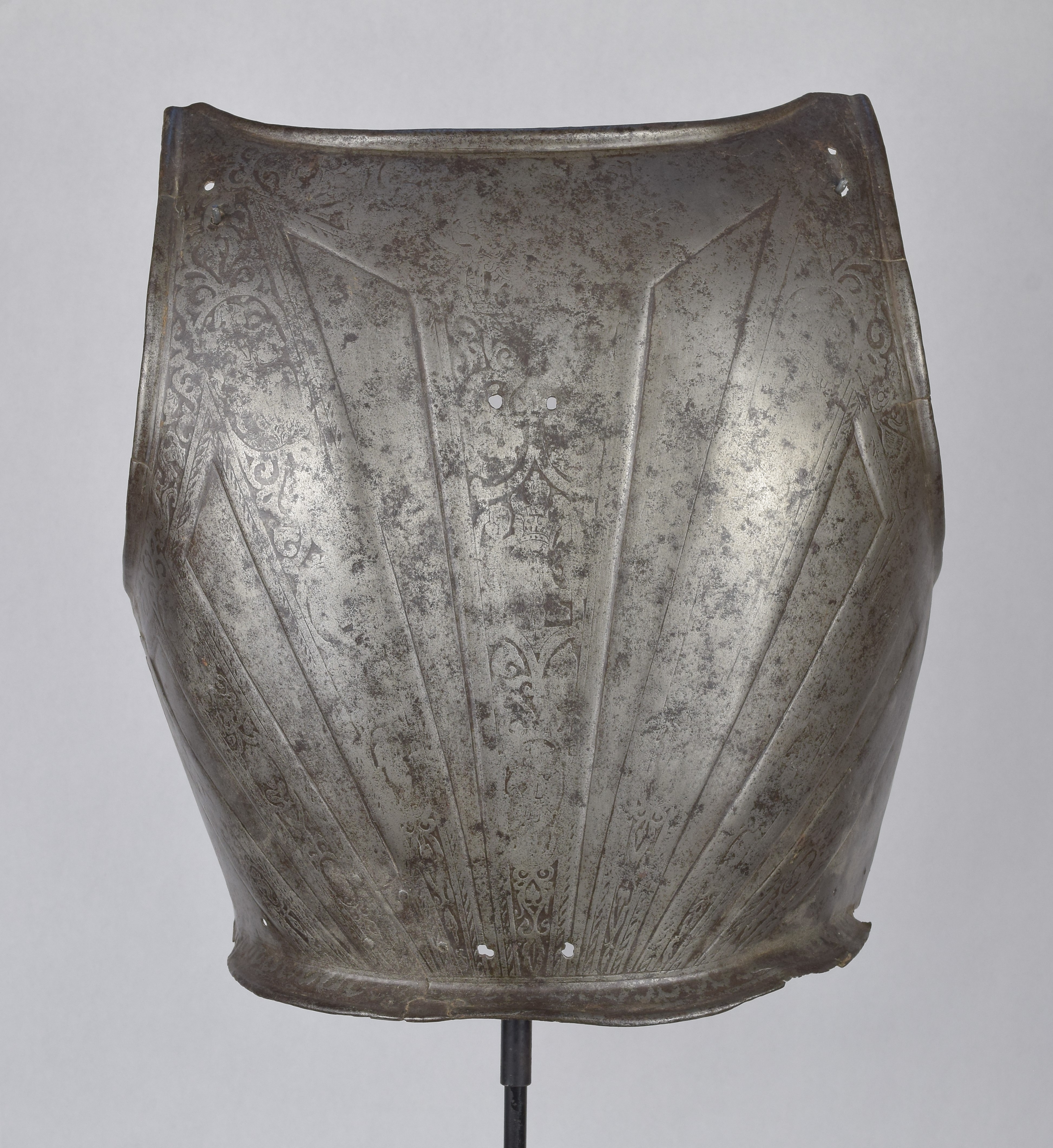



















Breast and back 1580
Well matched. Probably originally a cuirass. Breast with blunt peascod form at the waist. Inward turned roped roll at the neck. Single fauld lame (small patch on one end, larger patch on the other). Arm gussets lost. Some losses at the upper corners. Each end of the fauld lame with a modern patch, one forming a small end extension, the other much larger. Surface with recessed and raised areas. The raised areas mimic a typical "Pisan" pattern of bands of etching. The raised areas forming a border at the neck, along the arm holes and down the sides of the breastplate and at the neck and armholes of the back. There is no need for a border on the sides of the backplate, these are overlapped by the breast in use. Both breast and back have a central raised band with three three additional bands on each side radiating from the bottom. Raised areas extensively etched (and heavily worn). Matching back plate with matching decoration in similar condition. Neck, arm holes and waist flare with inward turned roped rolls. Etching also heavily worn and with later pair of holes at the center back. One internal riveted patch at the waist. Both breast and back show minor and larger signs of delamination.
This style of raised and recessed bands with etching seems to be relatively rare. A similar breastplate is preserved in the Fitzwilliam Museum in Cambridge (HEN.M.7A-1933) described as North Italian c. 1580.
It appears that the breast has been adapted for later use. The original holes for the gussets and straps at the shoulders have been augmented by a pair of radially decorated studs. These would have been used to secure steel covered shoulder straps that were used in the 17th c. I expect that the gussets were removed at the same time. It appears that many later 16th c. breastplates re-used in the 17th c. had their gussets removed. In addition there is an internally riveted strip at the right shoulder. This seems to be older than the patches in the fauld lame. There is no corresponding crack or hole in the breastplate. It appears that this is part of an originally larger plate. There is an additional rivet lower and the outer edge of the plate extends past the main edge of the breastplate and it seems that it was flared out in front. This may have been one of the odd extensions added to breastplates in the 17th c. that are described as being used to support the stock of longarms. A breastplate which retains one of these plates was found at the Jordan's Journey site associated with Jamestown VA.
Thickness: Breast: generally .08 in. Thins at the neck and around the arms where it would have been worn over a gorget and where the gussets would have added some thickness. Backplate: .042 in. at the waist and up to the arm holes. Thins toward the shoulder blades - .035 in. at the right and .023 in. at the left.
Purchased as part of a lot with A-354, W-59 and W-60 stated to have come from the important private collection of a Rocky Mountain couple. Image shows lot as sold.
If you have any questions, please send them to Wade Allen
This site last updated Tue Dec 12 12:03:13 EST 2023